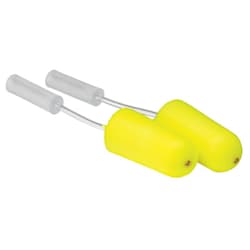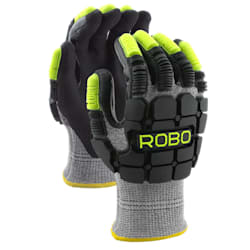Hazards in Glass Fabrication
Stauffer Glove & Safety is acutely aware of the potential for laceration and possible serious injury from handling the razorblade-like edges of raw glass or when disposing of offal. As architects continue to find new ways to use glass and glass manufacturers continue to produce larger pieces of glass, the sheer weight of the glass or assembly produces additional hazards to be addressed when trying to maintain a safe workplace. Aside from the sharp edges and the increases in weight, there are additional hazards that can be encountered while trimming the excess polyvinyl butyral from a laminated piece of glass, assembling spacers for an insulated glass unit, or handing glass coming off the tempering line.
Evolution of Cut-Resistant Materials
For as long as glass fabricators have been creating their products, they have employed various materials to protect their hands and bodies from the risk of cuts and other serious injuries. One of the first forms of personal protective equipment utilized was heavy leather aprons. They provided basic cut protection but could be cut with minimal pressure. Cut protection was enhanced with the development of Kevlar by DuPont. This para-aramid fiber can be knitted into gloves or woven into textiles, both increasing cut protection capabilities and reducing the weight of the protective garments. The addition of steel grommets to woven Kevlar garments enhanced their cut protection and provided some ventilation.





